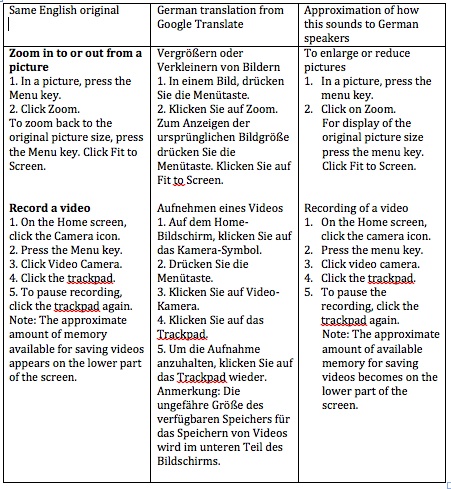Since I started working as a translator, I’ve discovered a lot of assumptions people have about translating. My first post on this blog dealt with some of these, such as translator = interpreter, or translators can translate any type of document or subject matter. Another assumption I’ve come across is that translation software or instant translation websites are interchangeable with people who work as translators (or if not interchangeable, perhaps the equivalent of a cake from a mix to the professional translator’s one made from scratch). This ties in to some of the other assumptions, in that they all seem to come from the thinking that once you know lots of words in another language, you can translate anything – apparently there’s a simple x=y formula for converting one language to another. Which makes it clear why software would be able to translate with the utmost accuracy. Unfortunately, there isn’t always (and some would argue there is never) a one-to-one match between two languages, so human involvement in the process is usually necessary, and automatic translation results can be laughable. In this post I’m going to try to explain the difference between automatic translation (aka machine translation) and us professional translators.
If you do translate something using a free online translator, or even paid software, you could get decent results, especially where the document is factual, with very simple sentence structures and clear language. User manuals are often cited as being ideal for machine translation. Some companies produce good results with their own custom built software that has been programmed with the company’s own writing style and terminology. But generic software doesn’t always work so well. Take a look at these results I got using SYSTRANet and Google Translate (two of the higher quality free online translators in my experience):


As you can see, the SYSTRANet translation needs some help! And I think it’s fair to say that a professional translator would prefer to see the original and just start over. However, the Google Translate version is actually pretty good.
I guess my point is, cake mixes are fine sometimes, but other times you want the quality of a homemade cake from scratch. (Can you tell I’ll be making a cake later today?) So understand the limitations of automatic translation, and when you might need to use a professional translator. And when you decide to go automatic, make sure you choose a good application (maybe not SYSTRANet?), or you might end up with something that’s not really a cake at all, but just a half-baked mess.
Have you personally had a bad experience using machine translation? Or have you obtained good results with a particular website/program? Either way, I’d love to hear about it, so please leave a comment!
